I DON’T WANT TO STUDY, I WANT TO WORK
BECAUSE STUDY DOES NOT PROVIDE ME MONEY
I AM SUNNY
No, I don’t want to study. Will it give me money? I earn Rs. 20/- per week and give it to my mother. Occasionally I buy biscuits/snacks from it but if I leave my job my mother will beat me because both the brothers of mine are engaged in work. Only my eldest sister studied, but none of other brother and sister studied. What’s there in a study? It is better to work.
My employer is quite good He does not beat me. I have to work from morning to evening. I work with the elder boys who earn more than me. I want to earn like them. I work in a pull machine to cut threads. My mother Roshan Ara works. She packs the snacks, locally made. My father used to be engaged in beedi binding but he is now sick. So we have to bear the cost of his medicine.
I also fell sick frequently. Yesterday I have stomach upset and also have fever a week ago. My mother used to sit beside me when I fell sick. I like to sing and dance during festival.
If all of my brothers and sisters start studying, my mother would not be able to run the family properly. If you can teach me something, which will generate income, I will definitely learn the skill.
I am Sunny; I am working for last one year. I am 8 years old
Introduction
Child rights are fundamental freedoms and the inherent rights of all human beings below the age of 18.
Children are innocent trusting and full of hope. Their childhood should be joyful and loving although for many children is different.
The disadvantaged children suffer from hunger, deficient health care and limited opportunities for basic education. Childhood can and must be preserved.
READS focused on the 4 basic rights of children and work to ensure these rights to the disadvantaged children. In 1992 India ratified the United Nation Convention on Rights of the Child. The Charter of Child Rights confers the following basic rights on all children across the world:
Ÿ The right to survival
Ÿ The right to develop
Ÿ The right to protection
Ÿ The right to participation
These rights have to be applied to every child, disregarding the child’s parents’ race, color, sex, creed or other status. The equality of opportunity must be a reality for all children.
What is the problem?
In the city of Kolkata the incidence of the problem of the underprivileged children is uncountable and child rights are not preserved properly. The problem regards all the children whose rights are negated. The following project aims to work with child labour and with children living in difficult circumstances including street children, slum children and discriminated girl children.
The reasons behind the problem are various; poverty is a cause and a consequence of child labour, when children start working at a young age they remain illiterate, unskilled and unable to demand their rights for equal wages and better conditions of work.
In the slum of Rajabazar and Belgachia the elevated poverty and illiteracy brings to a diffuse disinterested attitude of the families; the behavior should be eradicated through a general sensitization of the whole community. Overpopulation and lack of the basic health care notions are increasing the disadvantaged situation of the area.
Where is the problem?
The current project aims to cover the slum area of Rajabazar and Belgachia, both are very prominent localities located in the Northern part of Kolkata; Rajabazar has got five municipal wards 28, 29, 36, 37, 38 while Belgachia has got one municipal ward and is covered by three wards borders. The total census population is about six lakhs (600,000).
The mentioned areas have worn a dismal and miserable look because thousands of workers have been retrenched from their work due to industrial decline. The problem of the unemployment people is now important in both areas.
Under this critical situations a group of young people, imbued with social consciousness, working at the local grass-root level; banded themselves together to become social workers of their own community. They devote their time and energy in eradicating the obstacles to the development of human resources, and overcome ailments such as social malaise, economic exploitation and irregularity in different spheres of life under the banner of Rajabazar Education & Awareness Development Society (READS).
How big is the problem?
The city of Kolkata has a population of 1.32 Crore (census 2001) which is four times its capacity. The city has, and still is, attractive to migrants and refugees – a mayor factor that is contributing to the growth in population and urban poverty. The city has reported to have the largest slum population of all cities in India (Calcutta Plan of Action for children, Government of West Bengal)
Nowadays in the city of Kolkata the presence of street children who are not getting a proper education and forced to child labor is increasing because of the migration from rural areas. An estimate of the percentage of people leaving under the poverty line varies from 32.95% (Town and country planning organization) to 50% of Kolkata’sr population (micro-studies and other unofficial source). Comprehensive data on poverty in Kolkata is not available.
Based on the results of the surveys, studies and resources done with 50 families in Rajabazar they show that 35 of them (70%) have their children engaged in different occupations.
Who are the beneficiaries of the project?
The direct beneficiaries of the project are the children in difficult circumstances and the ones under child labour. The first area includes street and slum children of minority communities especially Muslim, emphasizing on girls. All children must have the same rights and the same opportunities to enjoy an adequate standard of living.
Indirectly the whole population of Kolkata as well as society in general is affected by these problems present in the poorest areas mentioned.
What has been done so far to overcome the problem? By whom?
Nowadays READS has pursued the following projects:
Street children programme: The educational project launched in 1998 has as its main objective the mainstreaming of the street children aged between 4 and 14 to attend full day formal school so they can complete their education successfully. The project achieved its target to mainstream 50% of all children into formal school. In the process READS has taken support from GOAL / CLPOA.
National Child Labour Project: The initiation included a child labour Special School, which consisted of 50 children withdrawn from child labour, an Awareness Generation Programme and a Rehabilitation Programme, including the mainstreaming of the children. The Ministry of Labour, Government of India, has supported the project.
Shikshalaya Prakalpa: The scheme aims to provide compulsory free elementary education to all up to the age of 14 years children in India. Under the educational guarantee scheme Government of India.
In context to the scheme the Government of West Bengal had set up a state Resource Group of Education for deprived urban children.
To start the scheme under the banner of Shikshalaya Prakalpa in Kolkata for age group of 5 to 9 year old children. Since September 2002 the project has been shifted to SARVA SHIKSHA ABHIYAN. The Shikshalaya Schools are given equal status as Government primary schools and also used the same syllabus and textbooks.
Formal School Support: In 2003 and 2005 a financial support was given by the funding agencies like BBWS/ GOAL/ CLPOA and the local contributors to sustain the mainstreaming into formal school which was implemented by READS. The received funds have been contributed to cover the expenses of school fees, books, uniforms and stationary.
Pulse Polio Immunization Booth: KMC in cooperation with UNICEF provided to us the oral polio vaccination as READS could participate to the Pulse Polio Immunization Booth vaccinating in the 2005, of 300 children against polio.
BECAUSE STUDY DOES NOT PROVIDE ME MONEY
I AM SUNNY
No, I don’t want to study. Will it give me money? I earn Rs. 20/- per week and give it to my mother. Occasionally I buy biscuits/snacks from it but if I leave my job my mother will beat me because both the brothers of mine are engaged in work. Only my eldest sister studied, but none of other brother and sister studied. What’s there in a study? It is better to work.
My employer is quite good He does not beat me. I have to work from morning to evening. I work with the elder boys who earn more than me. I want to earn like them. I work in a pull machine to cut threads. My mother Roshan Ara works. She packs the snacks, locally made. My father used to be engaged in beedi binding but he is now sick. So we have to bear the cost of his medicine.
I also fell sick frequently. Yesterday I have stomach upset and also have fever a week ago. My mother used to sit beside me when I fell sick. I like to sing and dance during festival.
If all of my brothers and sisters start studying, my mother would not be able to run the family properly. If you can teach me something, which will generate income, I will definitely learn the skill.
I am Sunny; I am working for last one year. I am 8 years old
Introduction
Child rights are fundamental freedoms and the inherent rights of all human beings below the age of 18.
Children are innocent trusting and full of hope. Their childhood should be joyful and loving although for many children is different.
The disadvantaged children suffer from hunger, deficient health care and limited opportunities for basic education. Childhood can and must be preserved.
READS focused on the 4 basic rights of children and work to ensure these rights to the disadvantaged children. In 1992 India ratified the United Nation Convention on Rights of the Child. The Charter of Child Rights confers the following basic rights on all children across the world:
Ÿ The right to survival
Ÿ The right to develop
Ÿ The right to protection
Ÿ The right to participation
These rights have to be applied to every child, disregarding the child’s parents’ race, color, sex, creed or other status. The equality of opportunity must be a reality for all children.
What is the problem?
In the city of Kolkata the incidence of the problem of the underprivileged children is uncountable and child rights are not preserved properly. The problem regards all the children whose rights are negated. The following project aims to work with child labour and with children living in difficult circumstances including street children, slum children and discriminated girl children.
The reasons behind the problem are various; poverty is a cause and a consequence of child labour, when children start working at a young age they remain illiterate, unskilled and unable to demand their rights for equal wages and better conditions of work.
In the slum of Rajabazar and Belgachia the elevated poverty and illiteracy brings to a diffuse disinterested attitude of the families; the behavior should be eradicated through a general sensitization of the whole community. Overpopulation and lack of the basic health care notions are increasing the disadvantaged situation of the area.
Where is the problem?
The current project aims to cover the slum area of Rajabazar and Belgachia, both are very prominent localities located in the Northern part of Kolkata; Rajabazar has got five municipal wards 28, 29, 36, 37, 38 while Belgachia has got one municipal ward and is covered by three wards borders. The total census population is about six lakhs (600,000).
The mentioned areas have worn a dismal and miserable look because thousands of workers have been retrenched from their work due to industrial decline. The problem of the unemployment people is now important in both areas.
Under this critical situations a group of young people, imbued with social consciousness, working at the local grass-root level; banded themselves together to become social workers of their own community. They devote their time and energy in eradicating the obstacles to the development of human resources, and overcome ailments such as social malaise, economic exploitation and irregularity in different spheres of life under the banner of Rajabazar Education & Awareness Development Society (READS).
How big is the problem?
The city of Kolkata has a population of 1.32 Crore (census 2001) which is four times its capacity. The city has, and still is, attractive to migrants and refugees – a mayor factor that is contributing to the growth in population and urban poverty. The city has reported to have the largest slum population of all cities in India (Calcutta Plan of Action for children, Government of West Bengal)
Nowadays in the city of Kolkata the presence of street children who are not getting a proper education and forced to child labor is increasing because of the migration from rural areas. An estimate of the percentage of people leaving under the poverty line varies from 32.95% (Town and country planning organization) to 50% of Kolkata’sr population (micro-studies and other unofficial source). Comprehensive data on poverty in Kolkata is not available.
Based on the results of the surveys, studies and resources done with 50 families in Rajabazar they show that 35 of them (70%) have their children engaged in different occupations.
Who are the beneficiaries of the project?
The direct beneficiaries of the project are the children in difficult circumstances and the ones under child labour. The first area includes street and slum children of minority communities especially Muslim, emphasizing on girls. All children must have the same rights and the same opportunities to enjoy an adequate standard of living.
Indirectly the whole population of Kolkata as well as society in general is affected by these problems present in the poorest areas mentioned.
What has been done so far to overcome the problem? By whom?
Nowadays READS has pursued the following projects:
Street children programme: The educational project launched in 1998 has as its main objective the mainstreaming of the street children aged between 4 and 14 to attend full day formal school so they can complete their education successfully. The project achieved its target to mainstream 50% of all children into formal school. In the process READS has taken support from GOAL / CLPOA.
National Child Labour Project: The initiation included a child labour Special School, which consisted of 50 children withdrawn from child labour, an Awareness Generation Programme and a Rehabilitation Programme, including the mainstreaming of the children. The Ministry of Labour, Government of India, has supported the project.
Shikshalaya Prakalpa: The scheme aims to provide compulsory free elementary education to all up to the age of 14 years children in India. Under the educational guarantee scheme Government of India.
In context to the scheme the Government of West Bengal had set up a state Resource Group of Education for deprived urban children.
To start the scheme under the banner of Shikshalaya Prakalpa in Kolkata for age group of 5 to 9 year old children. Since September 2002 the project has been shifted to SARVA SHIKSHA ABHIYAN. The Shikshalaya Schools are given equal status as Government primary schools and also used the same syllabus and textbooks.
Formal School Support: In 2003 and 2005 a financial support was given by the funding agencies like BBWS/ GOAL/ CLPOA and the local contributors to sustain the mainstreaming into formal school which was implemented by READS. The received funds have been contributed to cover the expenses of school fees, books, uniforms and stationary.
Pulse Polio Immunization Booth: KMC in cooperation with UNICEF provided to us the oral polio vaccination as READS could participate to the Pulse Polio Immunization Booth vaccinating in the 2005, of 300 children against polio.
Health Program / Healing Wheel: GOAL and CLPOA provided for the doctors and medicine through the Healing Wheel programme. READS has gave the children of Rajabazar general health check ups as well as information to the community about general health issues.
Why, despite the previous interventions, the problem still exists? What is the gap to be filled?
Particular parts of the society in India face the problems of ignorance, poverty and overpopulation. Due to these causes their social economic condition is deprived and not increasing as their quality of life is unimproved.
Despite all the enactment {The Child Labour (prohibition and regulation) Act 1986, “Juvenile Justice” (care and protection) Act 2000 etc.} the implementation part is very hard.
In the area of interest, together with the general prevailing reasons, the conservative attitude of the community brings the problem into criticality.
The actual gap lies between the public and the implementing agencies along with the Government due to improper ways of communication.
Therefore there is a struggle to give proper opportunities to children, through a powerful tool such as education, which will enhance them to a better future and help them on the development of their communities.
Now we want to cover the children those who are most victimize in our area of operation. We proposed to take the children from 8 to 14 years of age in both sex i.e. boys and girls. Special emphasis to be given to the girls’ child those who are living under at risk situation. One hundred children upto 11 years to be taken in Non formal Education’s beneficiaries with fifty each for boys & girls and fifty children to be included in vocational Training those who are above 12 years of age. Presently these children are working in various sectors like leather, Zari, Paper cutting and domestic worker. These children also belong to very poor family having poor income & big family size (8 to 10 members’ family).
It is also noted that our project is fully Non-Institutional and we promote the idea of Non-institutional services in our project area. But is also taken into consideration if any child found at Night or who has no facility to stay (i.e. Single Migrant Working Children) , we definitely take case with carefully and we are members of various network we could explore our networking to get services for these kind of children, like Child Line, Juveniles Homes run by Govt. and NGOs, Short Stay Homes for Girls ( it is high time to note that READS has run a Short Stay Home supported by Govt. of India). If any case found in future to rescue any child, we have that mechanism to protect the children from all possible violence and take its proper care to send the Child any homes or Night Shelters.
Now we want to cover the children those who are most victimize in our area of operation. We proposed to take the children from 8 to 14 years of age in both sex i.e. boys and girls. Special emphasis to be given to the girls’ child those who are living under at risk situation. One hundred children upto 11 years to be taken in Non formal Education’s beneficiaries with fifty each for boys & girls and fifty children to be included in vocational Training those who are above 12 years of age. Presently these children are working in various sectors like leather, Zari, Paper cutting and domestic worker. These children also belong to very poor family having poor income & big family size (8 to 10 members family).
It its also, noted that we don’t want to establish a Mobile Night Unit in first phase of project, let allow to run the project as we designed in first two years. If any requirement is found near future for Mobile Unit at Night by which our objective can be fulfilled to a desire level then we can proceed and design any kind programme relating to Mobile unit.
Strategy
The project aims to improve the quality of life for the underprivileged children through education and development.
To achieve the main goals READS is taking the following steps:
Awareness programme
To sensitize the community READS intends to pursue the awareness strategy as the core of intervention.
The mentioned causes of the critical situation present in the slum area have to be faced and struggled by convincing the population about the relevant role of education.
In order to create a culture of a school instead of a culture of work and to combat the child labour and the dropouts of school the organization aims to reach the highest number of the population of the minority communities of Rajabazar and Belgachia.
The campaign must be towards children, families, Local Opinion Leaders, Religious and Political Leaders as the representatives of the entire community.
Every sector of the society must be co-ordinate as every leader can interact with each other in sensitizing all the community.
The programme will propose several activities like formal meetings, cultural activities developed and leaded by experts, street dramas and road shows organized by READS’s Personal.
The campaign works also to build a consciousness of children directly involved in the project through Children Empowerment Training (CET); the programme consists in a life skill training for children by children and aims to empower and aware them about their own rights which are often still unknown. The preparation desires to make them feel responsible for themselves and to teach them how to interact in a peer group. During the training everyone must participate and interrelate with other participants; through cooperation the activity aims to improve leadership as well as listening skills and their consciousness. Different methods will be used and suggested to facilitate the task.
The impact of Children Empowerment Training is to form peer educator among the Children and these peer Educators will disseminate the information to all the children those who are part of this project and also other children those who are indirectly linked with. Because we always put some in-house event to share the training which is being imparted to the children.
Education
Education is one such tool that enables and empowers children to beak the vicious cycle of poverty.
Both areas of empowerment and poverty are composed by children whose right to develop have been negated.
Already there exists the option for formal education but it is not easy to hope for the child labour and / a children in difficult circumferences.
SARVA SIKSHA ABHIJAN (SSA) is Government of India’s flagship programme for achievement of Universalisation of Elementary Education (UEE). In a time bound manner as mandated by 86th amendment to the constitution of India making free and compulsory education to the children of 6-14 years age group a fundamental right SSA is being implemented in partnership with state Govt. to cover the entire country the needs of 192 million children in 1.1 million habitations. The programme seeks to open new schools in those habitations, which don’t have schooling facilities and strengthen existing school infrastructure through additional class rooms, toilets, drinking water, maintenance grant and school improvement grant. Existing schools with inadequate teachers strengthen and provided with additional teachers is being strengthen by extensive training, grants for developing teaching learning materials and strengthening of the academic support structure at a cluster, block and district level. SSA seeks to provide quality elementary education including life skills. SSA has a special focus on girl’s education and children with special needs. SSA also seeks to provide computer education to bridge the digital divide.
Mainstreaming process is an activity to progress in the way of education.
The children who have never been to school or school dropouts due to reason are given the education to bridge up the gap between the two.
Building the gap is not easy. Because the school drop outs might have the preliminary literacy level. So, a target group is first being developed for school drop out by conducting some kind of admission test and target groups would be categorized.
Questionnaire in this regard has, been so developed, so that the less knowledgeable students will score low marks.
The questionnaire would be at par to the syllabus of with the prevailing formal education.
We will categorize the student according to their need level. We will divide it in 5 categories based on the performance level at par with the targeted formal educational standard in which they are going to be mainstreamed.
Problems identified during educational programme & mainstreaming and the possible solutions of it.

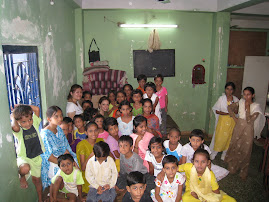







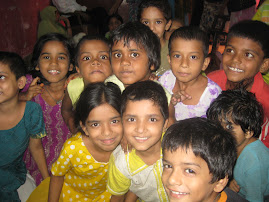
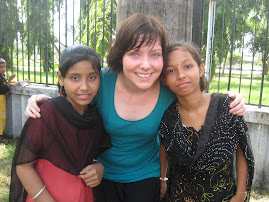
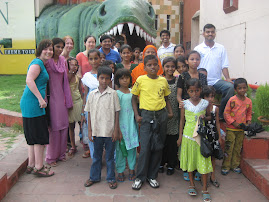
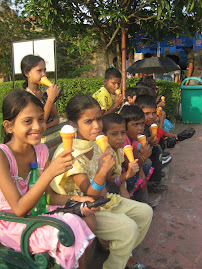





























No comments:
Post a Comment